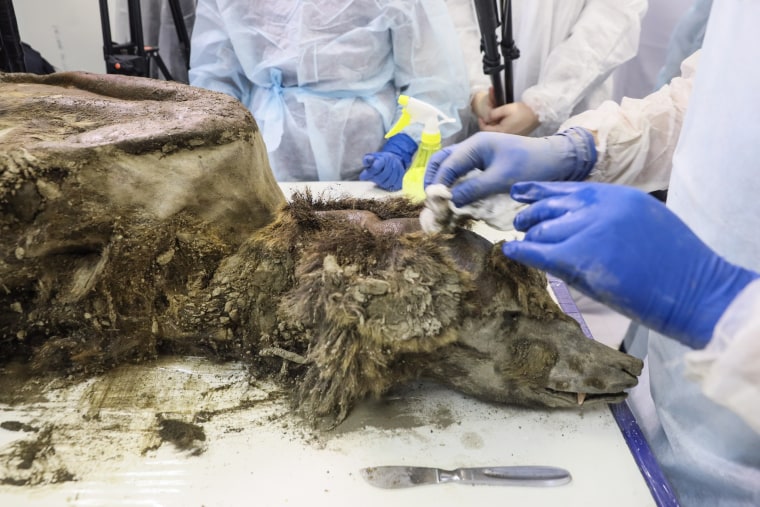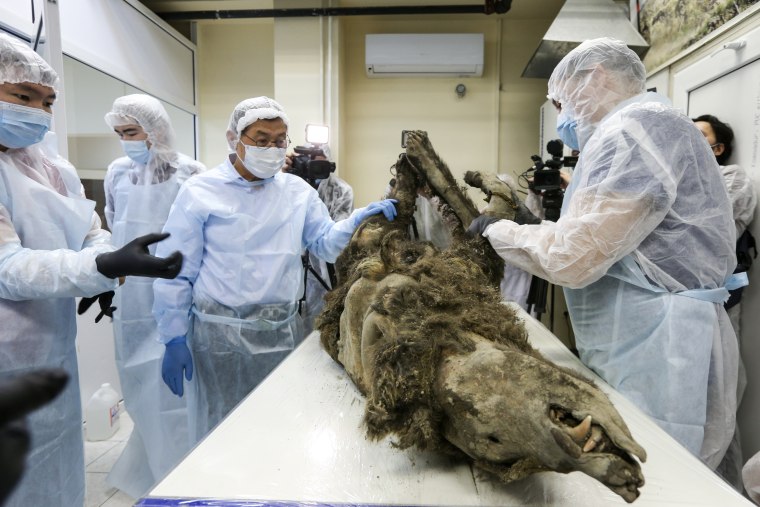A brown bear that lay almost perfectly preserved in the frozen wilds of eastern Siberia for 3,500 years has undergone a necropsy by a team of scientists after it was discovered by reindeer herders on a desolate island in the Arctic.
“This find is absolutely unique: the complete carcass of an ancient brown bear,” said Maxim Cheprasov, laboratory chief at the Lazarev Mammoth Museum Laboratory at the North-Eastern Federal University in Yakutsk, eastern Siberia.
The female bear was found by reindeer herders in 2020 jutting out of the permafrost on Bolshoy Lyakhovsky Island, part of the New Siberian archipelago around 2,900 miles east of Moscow.

Because it was found just east of the Bolshoy Etherican River, it has been named the Etherican brown bear.
The extreme temperatures helped preserve the bear’s soft tissue for 3,460 years, as well as remains of its final repasts — bird feathers and plants. The bear is described as being 1around 5 feet tall and weighing nearly 172 pounds.
“For the first time, a carcass with soft tissues has fallen into the hands of scientists, giving us the opportunity to study the internal organs and examine the brain,” said Cheprasov.
The scientific team in Siberia cut through the bear’s tough hide, allowing scientists to examine its brain, internal organs and carry out a host of cellular, microbiological, virological and genetic studies.
The pink tissue and yellow fat of the bear was clearly visible as the team dissected the ancient beast.

They also sawed through its skull, using a vacuum cleaner to suck up the skull bone dust, before extracting its brain.
“Genetic analysis has shown that the bear does not differ in mitochondrial DNA from the modern bear from the north-east of Russia — Yakutia and Chukotka,” Cheprasov said.
He said the bear was probably aged about 2-3 years. It died from an injury to its spinal column.
It is, though, unclear how the bear came to be on the island, which is now divided from the mainland by a 31-mile strait. It may have crossed over ice, it might have swum over, or the island might still have been part of the mainland.
The Lyakhovsky islands contain some of the richest palaeontological treasures in the world, attracting both scientists and ivory traders hunting for woolly mammoths.
Source: | This article originally belongs to Nbcnews.com










